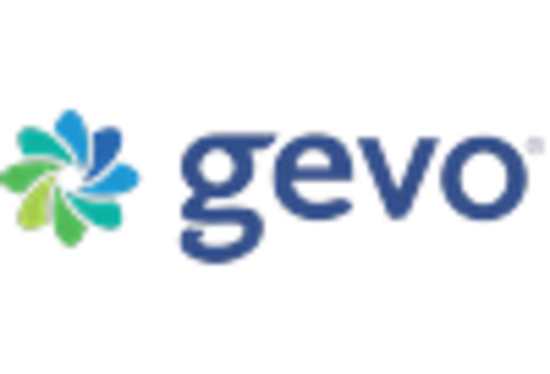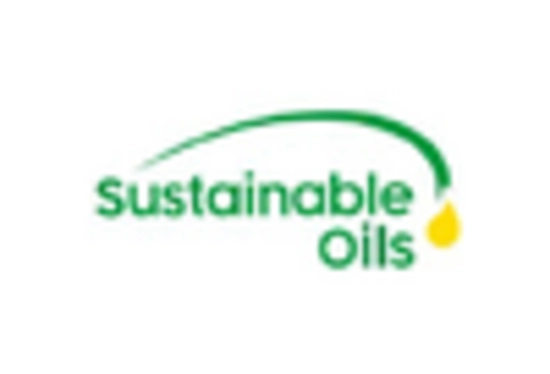The Catalytic Hydrothermolysis Jet (CHJ) Fuel Market is currently characterized by a dynamic competitive landscape, driven by the increasing demand for sustainable aviation fuels and the global push towards decarbonization. Key players such as Gevo Inc (US), LanzaTech (US), and Velocys (GB) are at the forefront, each adopting distinct strategies to enhance their market positioning. Gevo Inc (US) focuses on innovation in biofuels, leveraging its proprietary technology to convert renewable resources into high-quality jet fuel. Meanwhile, LanzaTech (US) emphasizes partnerships with major airlines to facilitate the adoption of its carbon capture and utilization technologies, thereby enhancing its operational focus on sustainability. Velocys (GB) is strategically investing in regional expansions, particularly in the UK and Europe, to capitalize on favorable regulatory environments and growing market demand for sustainable fuels. Collectively, these strategies indicate a competitive environment that is increasingly oriented towards innovation and sustainability.
In terms of business tactics, companies are localizing manufacturing and optimizing supply chains to enhance efficiency and reduce costs. The market structure appears moderately fragmented, with several players vying for market share while also collaborating on various initiatives. This fragmentation allows for a diverse range of technologies and approaches, which could potentially lead to increased competition and innovation in the sector.
In August 2025, Gevo Inc (US) announced a strategic partnership with a major airline to develop a new supply chain for sustainable aviation fuel. This collaboration is expected to streamline the production and distribution of CHJ fuel, thereby enhancing Gevo's market presence and aligning with the airline's sustainability goals. The significance of this partnership lies in its potential to accelerate the adoption of sustainable fuels in the aviation sector, which is crucial for meeting global emissions targets.
In September 2025, LanzaTech (US) secured a multi-million dollar investment from a consortium of investors to expand its carbon capture technology. This funding is aimed at scaling up operations and enhancing the efficiency of its processes, which could lead to a significant reduction in production costs for CHJ fuel. The strategic importance of this investment underscores LanzaTech's commitment to innovation and its role in the transition to a low-carbon economy.
In July 2025, Velocys (GB) completed the construction of its first commercial-scale biorefinery in the UK, which is set to produce CHJ fuel from waste biomass. This development marks a critical milestone for Velocys, as it not only demonstrates the viability of its technology but also positions the company as a leader in the sustainable fuel market. The operationalization of this facility is likely to enhance Velocys's competitive edge and contribute to the overall growth of the CHJ fuel market.
As of October 2025, current competitive trends in the Catalytic Hydrothermolysis Jet Fuel Market are increasingly influenced by digitalization, sustainability initiatives, and the integration of advanced technologies such as AI. Strategic alliances among key players are shaping the landscape, fostering innovation and collaboration. Looking ahead, it appears that competitive differentiation will evolve, with a notable shift from price-based competition to a focus on technological advancements, innovation, and supply chain reliability. This transition is likely to redefine the competitive dynamics within the market, emphasizing the importance of sustainable practices and cutting-edge technologies.

















Leave a Comment